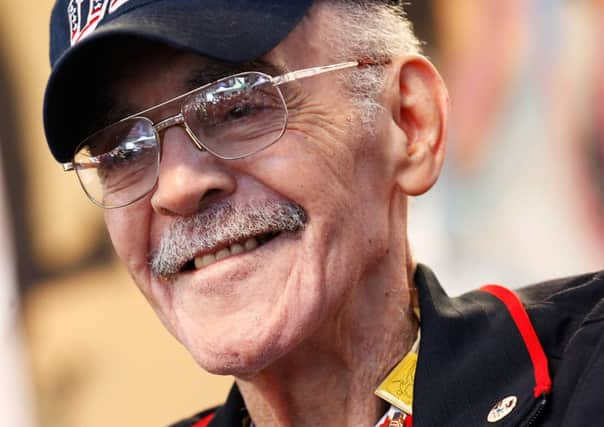Obituary: Mal Whitfield, athlete


Mal Whitfield overcame a humble and disadvantaged upbringing to become one of America’s most renowned athletes of all time and later a highly acclaimed global sporting ambassador for his country.
As a double Olympic 800 metres gold medallist he was one of an exclusive club of three, along with Britain’s Douglas Lowe and New Zealand’s Peter Snell. In total, Whitfield collected five Olympic medals in London in 1948 – in addition to his 800m success, he won gold as a member of the United States 4x400m relay team and bronze in the individual 400m, while in Helsinki in 1952, he added a silver in the 4x400m relay to his 800m gold.
Advertisement
Hide AdAdvertisement
Hide AdFrom 1948 to 1954, he was virtually unbeatable over two laps, winning 66 of 69 races during that period. Although he primarily ran to win as opposed to setting records, he did create six world records, including two at the half-mile.
One disadvantage regarding record breaking was his frequent “doubling up” at meetings – that is, running both the 400m and 800m in one afternoon. That said, he recorded some memorable “doubles”, as at Eskiltuna, Sweden in 1953 when he established a world record at 1,000m and, within an hour, a US record at 440 yards.
Widely known as “Marvellous Mal”, he was a beautifully smooth, elegant runner. Cordner Nelson, the celebrated American athletics observer, wrote: ”He was always cool and poised. He could jockey through any field, follow any pace and hold his own in any drive along the straight.”
Prior to the London Olympics he had never competed internationally and the favourite for the 800m was Arthur Wint, the well-known Jamaican athlete with a Scottish mother who had already won the 400m title at the same Games. But tactically Whitfield was very shrewd and he ensured he had a good lead over Wint coming off the final bend, enabling him to clinch the win. In 1952, Wint was again his main rival and again Whitfield held him off in the final straight to win by two yards. Afterwards he said: “I played it safe, I felt I could win that way. I had plenty left.”
The 4x400 relay provided a fitting finale to the Helsinki Games. In an enthralling race, over the last leg Jamaica’s Olympic 400m champion George Rhoden just pipped Whitfield to the tape, both being given the same split time with both teams shattering the US world record by more than four seconds.
He also ran in Scotland. Back in the day, the Rangers’ Sports was one of the highlights of the athletics season and attracted some of the world’s biggest names to Ibrox. In 1950 Whitfield comfortably won the half-mile off scratch while also setting a new Scottish All Comers’ record. In second, off a handicap of 24 yards, was former Scottish champion, Edinburgh’s Jimmy Smart, later a well-known athletics official, demonstrating the gulf between world class and domestic level.
Edinburgh’s Highland Games at Murrayfield was another high-profile event then and in 1952 in front of a crowd of 50,000, Whitfield won the half-mile before showing his versatility by winning the 220 yards.
As a youngster, Whitfield’s family moved to the Watts district of Los Angeles, later synonomous with race riots. His father died when he was aged four and his mother when he was 12, leading to his sister adopting him and bringing him up. He became interested in athletics after watching black American Eddie Tolan win the 100m at the Los Angeles Olympics.
Advertisement
Hide AdAdvertisement
Hide AdAfter Jefferson High School, he joined the US Air Force in 1943, becoming one of the “Tuskegee Airmen”, an exclusively African-American aviator corps, so-called as their original base was near Tuskegee in Alabama. Most of his war service was spent with a fighter group based in Ohio and when war finished he attended Ohio State University while still serving in the Air Force.
When the Korean War broke out, he was recalled to service and as a tail gunner flew 27 bombing missions. He later recalled: “As a staff sergeant I flew combat missions with 13th Squadron. Sometimes I trained on icy Korean airstrips with a pistol strapped to my waist.”
In 1954 he became the first black recipient of the James E Sullivan award for America’s most outstanding sportsman of the year. It did not escape his notice that to access the room where the ceremony was held he was not allowed to use the “normal” lift but had to use the service lift. He also experienced racism at times during his military service. This led to his involvement in the civil rights movement from a sporting perspective. Calling for a boycott of the 1964 Tokyo Olympics, he said: ”American negro athletes have to join the civil rights fight – it’s time for the USA to live up to its promises of liberty, equality and justice for all.”
When his running career finished he was appointed a sporting ambassador for the US Foreign Service and spent many years in Africa, Asia and the Caribbean promoting and developing sporting opportunities for as wide a cross-section of youngsters as possible. He reckoned he had visited 132 countries in this role and was tireless in pursuit of his aims.
Once retired, he set up his own foundation to continue this work and was highly regarded for his excellent contribution. Paying tribute at a White House reception, president Ronald Reagan said: “Whether flying missions over Korea, or winning gold medals at the Olympics or as a goodwill ambassador among the young athletes of Africa, the country is proud of you and grateful to you.”